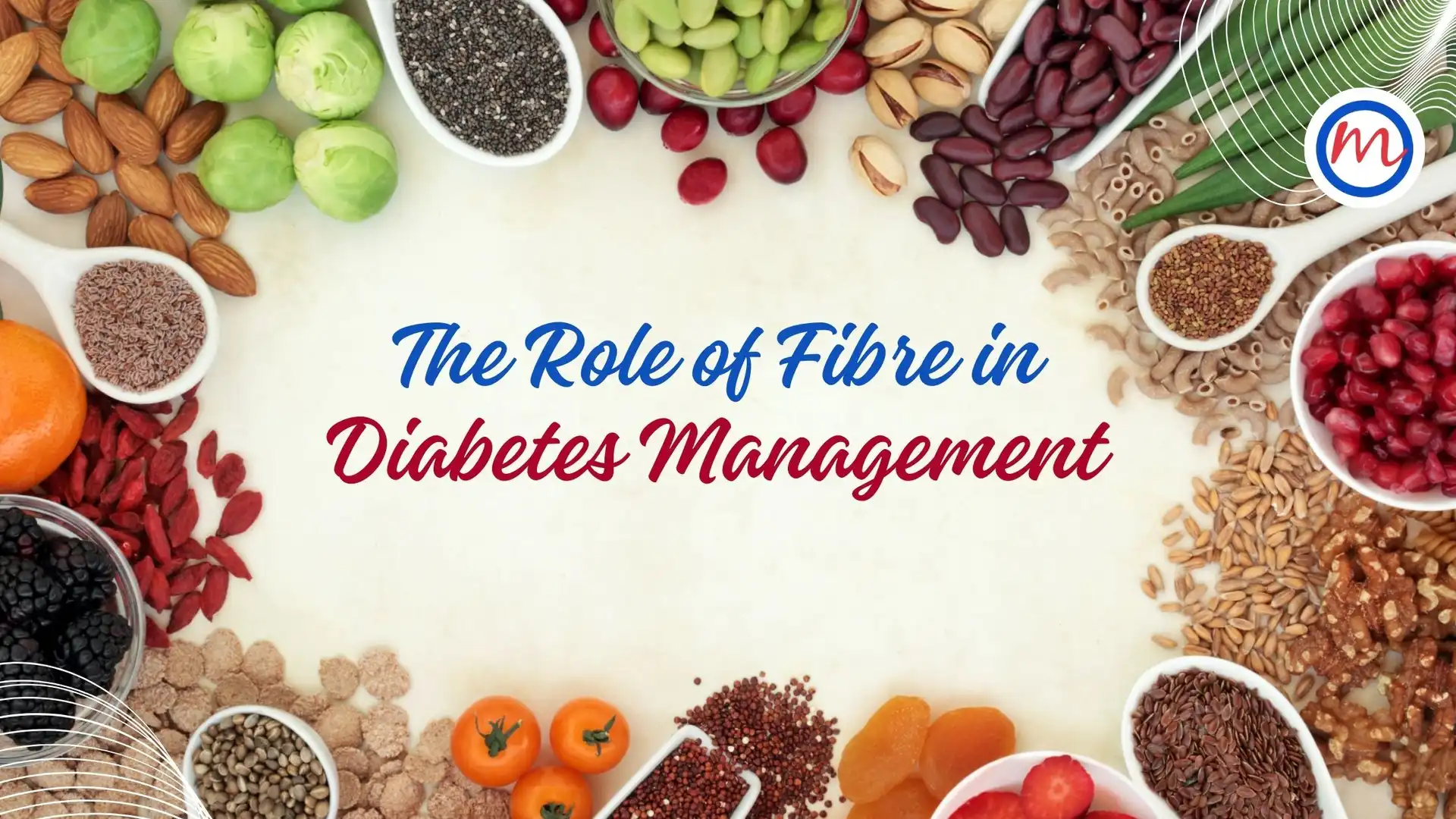The Role of Fibre in Diabetes Management: Why It Matters
Introduction
Diabetes is a chronic condition that affects millions of people globally, altering the way the body processes glucose. Managing blood sugar levels requires a multi-pronged approach—and one often-overlooked dietary hero is fibre. Yes, dietary fibre can significantly impact blood sugar regulation, gut health, and overall wellness.
In this post, we’ll explore the vital role fibre plays in diabetes management, the different types of fibre, how much you need daily, and the best fibre-rich foods to support stable glucose levels.
What is Diabetes and How Does It Affect the Body?
Diabetes mellitus is a condition where the body either does not produce enough insulin or cannot use it effectively, leading to elevated blood sugar levels.
Left unmanaged, high blood sugar can lead to heart disease, nerve damage, kidney problems and vision issues. That’s why incorporating blood sugar-friendly strategies—like eating more fibre—is crucial.
Why Fibre Matters for Individuals with Diabetes
Fibre plays a key role in slowing the absorption of glucose into the bloodstream. This helps prevent sudden spikes or crashes in blood sugar, enabling better daily control.
Key benefits of fibre for diabetes include:
- Stabilises blood sugar levels
- Enhances satiety (feeling full)
- Aids in weight management
- Improves gut health and digestion
Incorporating fibre is a natural and effective way to manage your condition while supporting metabolic and digestive health.
Types of Fibre and Their Impact on Blood Sugar
Fibre is classified into two types, each with its own health advantages:
- Soluble Fibre
- Dissolves in water to form a gel-like substance
- Slows down digestion and glucose absorption
- Helps lower LDL (bad) cholesterol
Top sources: Oats, barley, legumes (like beans and lentils), apples, citrus fruits
- Insoluble Fibre
- Adds bulk to stool and aids regular bowel movements
- While it does not directly lower blood sugar, it promotes digestive efficiency
Top sources: Whole grains, bran, cauliflower, carrots, green beans
How Much Fibre Do You Need Daily?
Here’s a general guide:
- Men under 50: 38 grams/day
- Women under 50: 25 grams/day
- Men over 50: 30 grams/day
- Women over 50: 21 grams/day
Doctors and dietitians often recommend gradually increasing fibre intake and pairing it with adequate hydration to prevent bloating or discomfort.
Best High-Fibre Foods for People with Diabetes
Incorporating fibre-rich foods can transform your diabetes management plan. Some excellent options include:
Legumes
- Chickpeas, black beans and lentils are packed with fibre and plant protein
- Try them in curries, salads or soups
Whole Grains
- Opt for brown rice, quinoa or whole wheat bread instead of refined grains
- They release glucose more slowly, preventing sugar spikes
Fruits (with skins)
- Apples, pears and berries offer soluble fibre and antioxidants
- Enjoy them raw or in smoothies
Vegetables
- Broccoli, carrots and Brussels sprouts offer both fibre and essential nutrients
- Steam or roast for flavourful sides
Nuts and Seeds
- Chia seeds, flaxseeds and almonds are great for snacks and smoothies
- They contain both fibre and healthy fats
Additional Benefits of a High-Fibre Diet in Diabetes
Besides blood sugar regulation, fibre-rich diets offer:
- Improved gut microbiota, which supports immune health
- Better cholesterol control, reducing cardiovascular risks
- Enhanced insulin sensitivity, making blood sugar management easier
- Reduced need for frequent snacking, aiding weight control
Practical Tips to Increase Fibre Intake
- Swap white bread for whole grain or multigrain alternatives
- Add vegetables to every meal—even breakfast smoothies
- Snack on fruits, unsalted nuts or roasted legumes
- Experiment with fibre-enhanced recipes like dal with whole grains
- Increase fibre slowly and drink more water to support digestion
Final Thoughts: Make Fibre Your Ally in Diabetes Care
Fibre is more than just a digestion aid—it is a powerful tool in managing diabetes. It helps stabilise blood sugar, support gut health, lower cholesterol and even enhances insulin effectiveness.
By making small dietary changes and consistently choosing fibre-rich foods, you can take proactive control of your diabetes and overall health. Embrace whole grains, legumes, vegetables and fruits, and let your plate become your partner in wellness.



